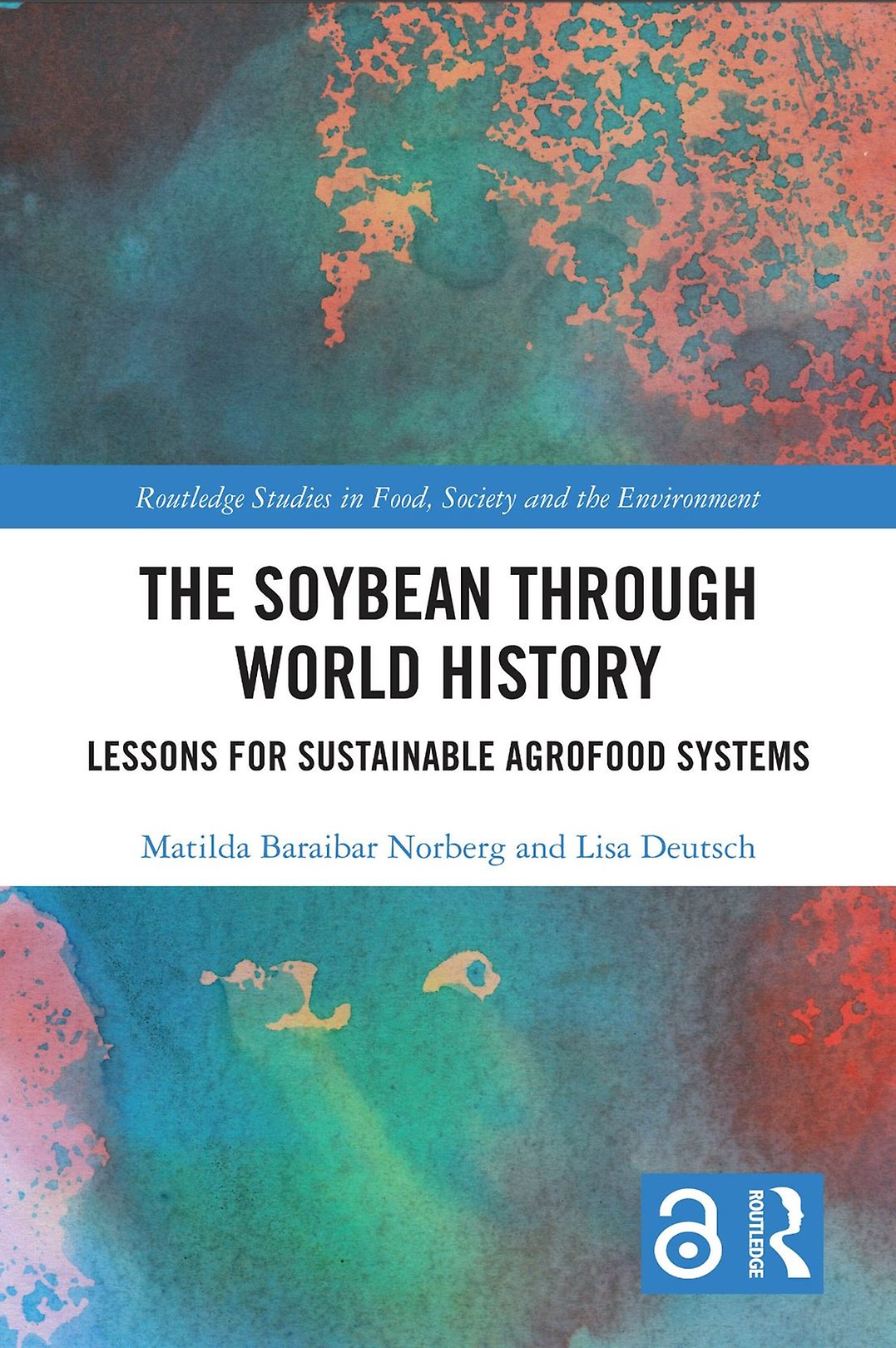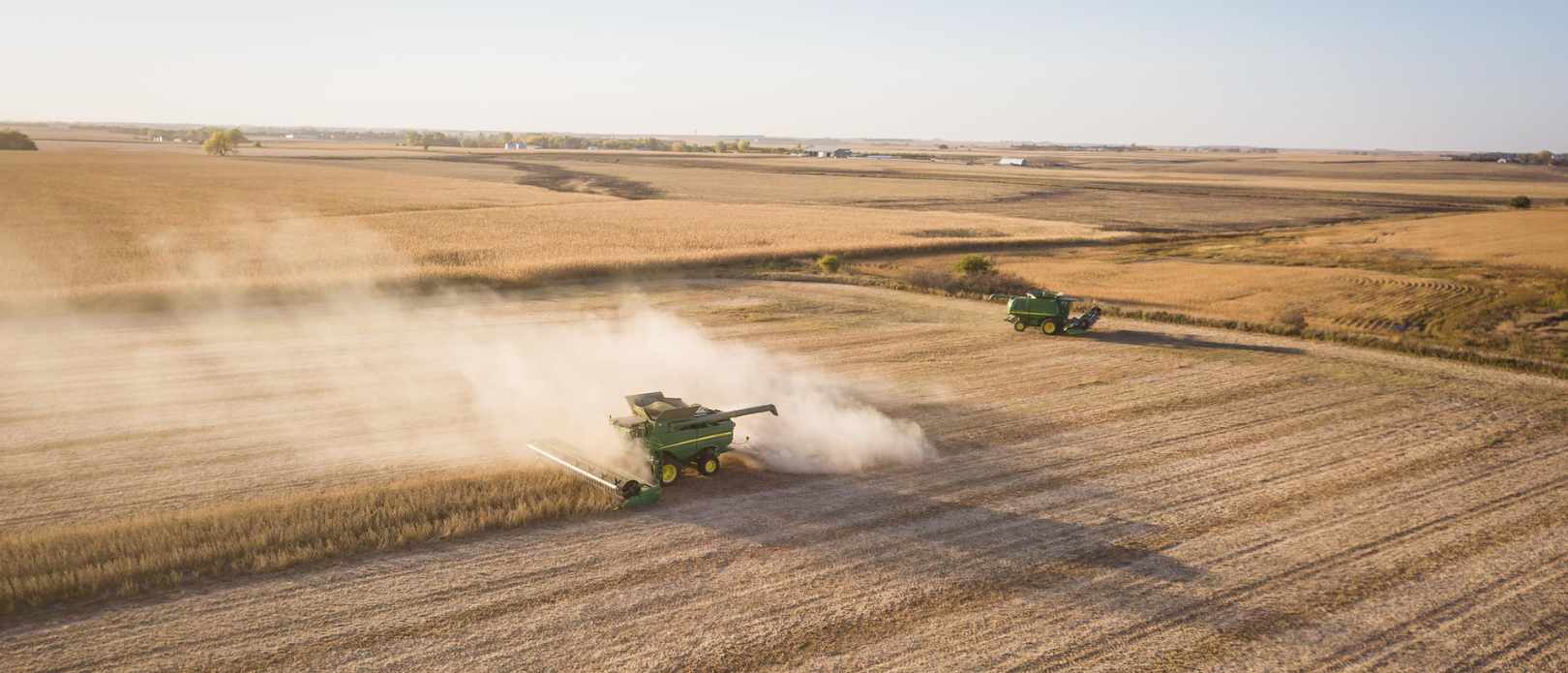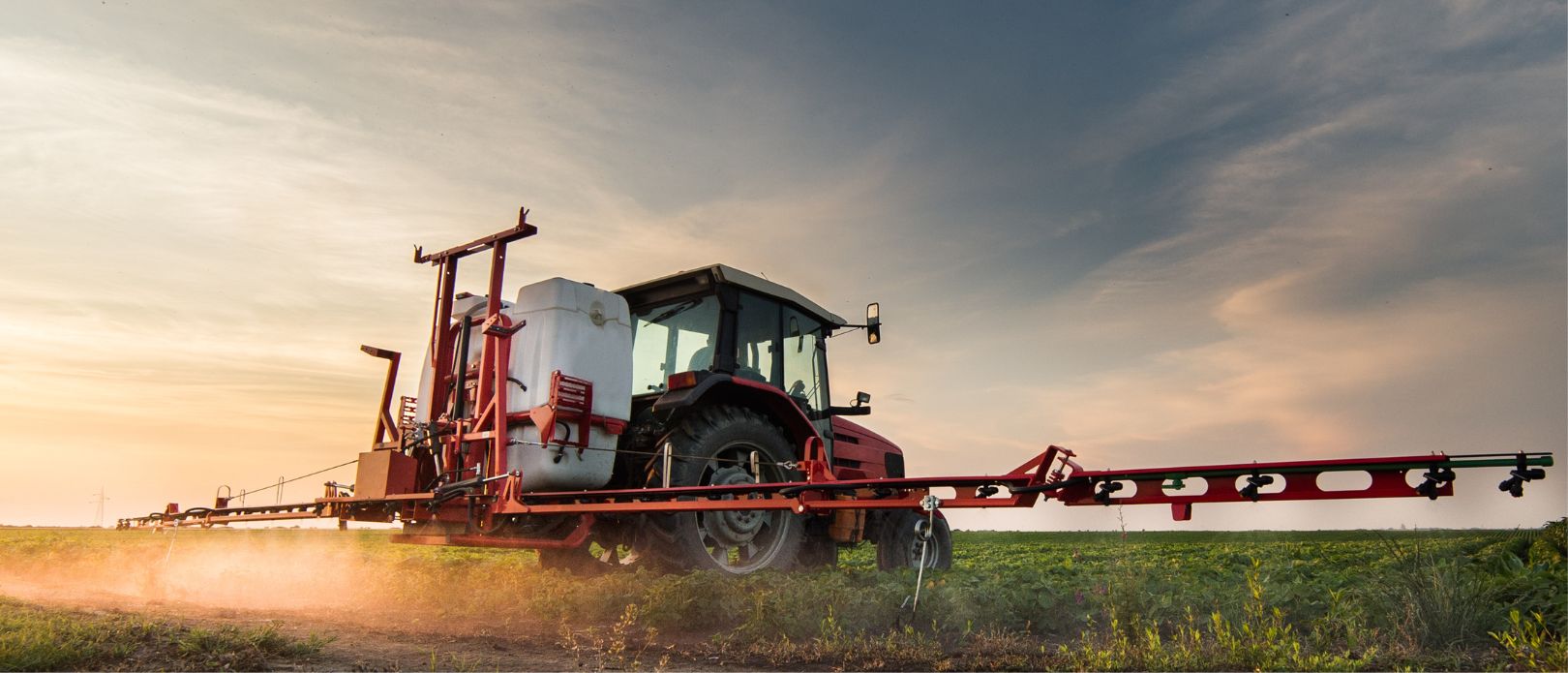agrofood globalization
Soy: A world journey from success to uncertainty
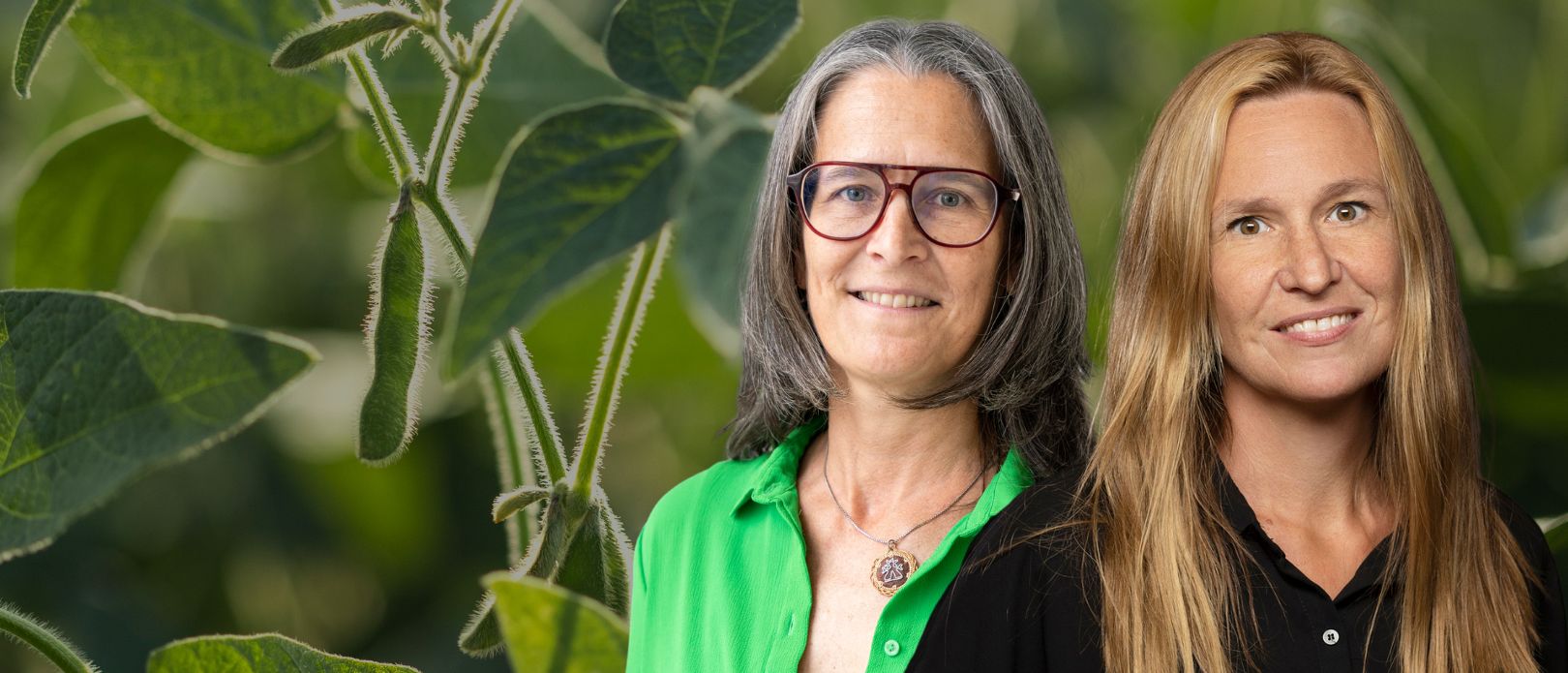
From a bean valued for its multitude of functions in ancient China to one of the most traded agricultural commodities of the modern world: the soybean has gone through dramatic changes throughout the millennia.
Centre researcher Lisa Deutsch and Stockholm University colleague Matilda Baraibar, an associated professor of economic history, have tracked the bean’s diverse economic history in a book.
- The book "The Soybean Through World History" examines the changing roles and functions of the soybean throughout world history
- It discusses how this reflects the complex processes of agrofood globalization
- In this Q&A the authors explain the book's main points
Soy is ubiquitous and invisible at the same time. It is the fourth most widely cultivated plant in the world – right after wheat, maize and rice. And nearly all of us consume the bean in some form on a daily basis. But many of us don’t ever think about it. How come?
We sat down with Centre researcher Lisa Deutsch and Stockholm University colleague Matilda Baraibar, authors of the book “The Soybean Through World History”, to get some answers.
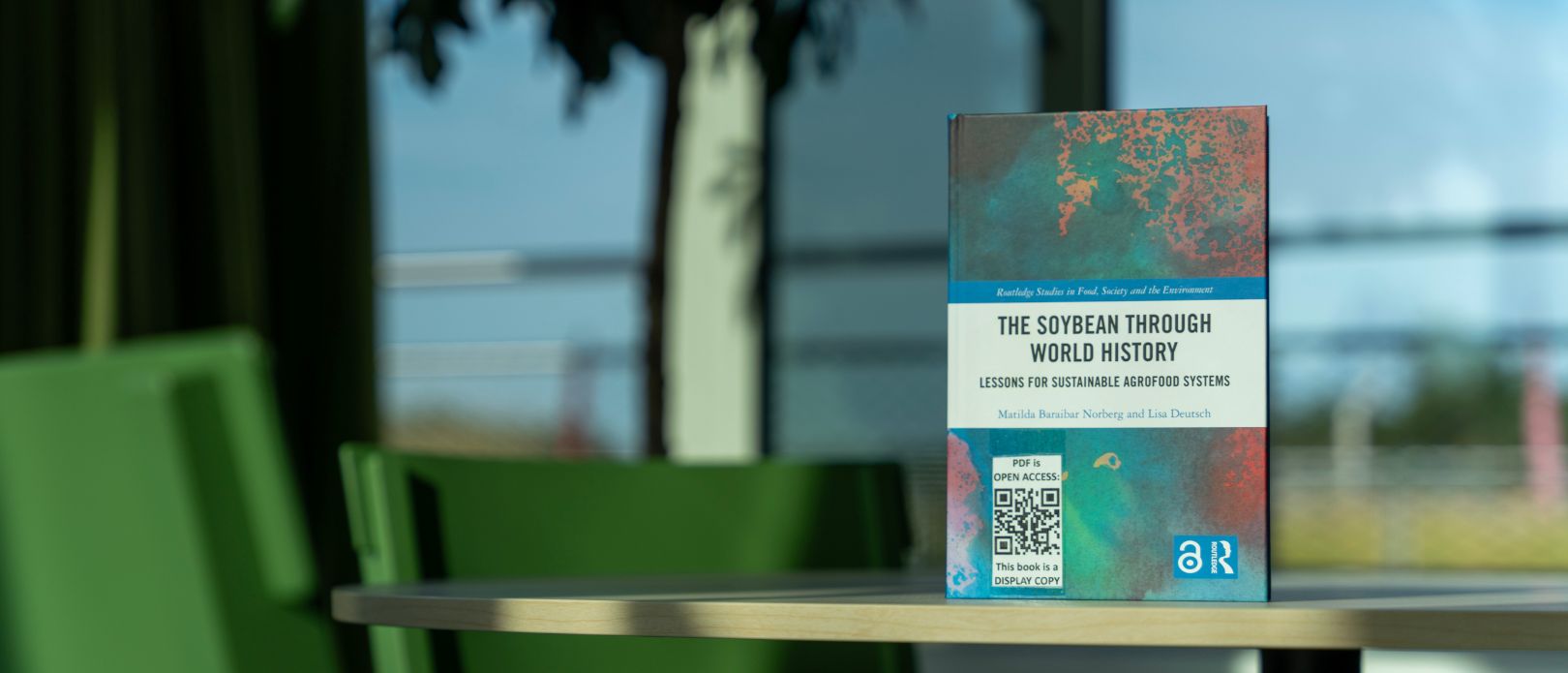
What makes the soybean so interesting as an example of today’s food system?
Despite being one of the most cultivated plants on the planet, the absolute lion’s share of soybeans that we consume is invisible to us. To a large extent that’s because they have gone through an animal's stomach before they end up on our plate: Soy is key in livestock production. More than 75 percent of all soy goes directly to animals as feed.
That’s not all though, soy is used in hundreds of different products. It’s one of the largest global sources of vegetable oil, second only to palm trees; soy-based biodiesel fuels the truck that transports your food to the supermarket; and the soybean is a central component in other sectors: biotech, agrochemicals and commodity trading.
The remarkable success of soy lies in its versatility and affordability . However, a central message of this book is that this success is, at best, only a fragment of the complete narrative. We challenge the naturalized success narrative surrounding soy, shedding light on how its present roles and functions in the international agrofood system are, in part, the outcomes of specific power relations and historical legacies. By unraveling the social construction of soy and its supply chain, we demonstrate how demand was intricately shaped through persistent efforts by both agribusiness and the US government to explore new markets and outlets - it was not end-consumers demanding soy.
Soy has become ubiquitous in the global agrofood system mostly because people never consider how their chicken, pork, beef, fish or dairy products were produced.
Through a historical lens, we illuminate the extensive process by which modern soy evolved to become more versatile and affordable over time. For instance, the United States Department of Agriculture - USDA - invested hundreds of millions of dollars in Research & Development, striving to discover cost-effective methods of soy production and enhance its suitability as animal feed. Influential players in the soy industry, including soybean growers like the American Soybean Association, and traders such as ADM and Cargill, played pivotal roles in shaping US agricultural policies — including foreign aid. These policies, in turn, have benefited soy, ultimately contributing to its enhanced competitiveness and lower cost.
Soy has become ubiquitous in the global agrofood system mostly because people never consider how their chicken, pork, beef, fish or dairy products were produced. Instead, the main drivers shaping this part of our food system have been a powerful bloc of mega agribusiness firms, trade rules and meat companies. In essence, the book aims to unveil the multifaceted dimensions of soy's success, rooted in a complex interplay of power dynamics, historical influences and strategic market efforts.
That’s what makes the soybean a perfect example of our commodity food system. A system that is entirely built around producing food at a low price, with little concern for other consequences. This system supplies much of our food, but separates us as consumers from the people and places where our food is made – and the effects that our food choices have on our planet and people.
In the book, you focus on the history of the soybean and showcase three different unique time periods you call soybean cycles. What is special about the history of this crop?
Throughout its history, the soybean has had many different roles in different parts of the food system, many of which are not taken advantage of today. Soy is both an oilseed and a legume. It is not only hardy in terms of growing in challenging environmental conditions, but it can fixate its own nitrogen fertilizer, has both a high protein and oil content, and is easily transported. Soy is highly versatile and flexible in many ways.
Soy’s cheapness comes at the cost of commodifying nature and humans. Soy is only cheap because its full social-ecological costs remain hidden from its price.
But for those driving the soy commodity chain today the soy is only highly valued because it is cheap. Soy offers a cheap way to produce meat, fish, eggs, dairy, pet food, margarine, biofuel, ink, cosmetics, paints, soaps … the list is endless.
Soy’s cheapness comes at the cost of commodifying nature and humans. Soy is only cheap because its full social-ecological costs remain hidden from its price. Greenhouse gas emissions, biodiversity loss, habitat degradation, land grabbing, polluted waterways, and obesity are some of the many negative effects that are externalized – that means they are not considered a cost that must be borne by the producing company. Otherwise, their production would be much more expensive.
Today, the soybean is one of the most widely cultivated plants in the world. But is that going to stay like that?
At first glance, there are no signs of a halt in global soy expansion or intensification under the current regime - the time period of stability in the food system, between periods of crisis (rupture) and reorganization (roots)). However, all regimes are historical in nature. Eventually, challenges, contradictions, and limits trigger their rupture and end.
From the vantage point of historical legacies and breaks, we focus on three different types of challenges that could be signs of an approaching rupture phase:
Firstly, a crisis of structure. Soy has been successful because it could be cultivated on ever more lands, but frontier expansion and ecological simplification are closing in on biophysical limits.
Secondly, soy might not be able to continue as a cheap crop. Stricter environmental regulations, traceability requirements, and reductions in growth of meat consumption as wealthy countries reach “peak meat” all play in here. So do technological barriers: soy, in the way it is produced today, requires a package of agrochemicals. But resistant weeds, or lawsuits and bans on agrochemicals threaten profitability.
Thirdly, there is a political challenge as the contemporary soy regime is contested by popular countermovements in producing countries. Simultaneously, there is a competition between China and the United States for world hegemony, encompassing control of the global soy complex.
A rupture in the present soy regime may not be imminent, but it is inevitable. Looking back through time, history shows us that change is natural and constantly taking place.
What lessons can one learn from the soybean for present and future food systems?
There is nothing inevitable about the current role of soy in the agrofood system. As history shows, soy can take on a wide variety of roles throughout the agrofood system: as on-farm “green” fertilizer to improve soils and intensify agriculture, as livelihood options to use as on-farm animal feed or for direct financial gains through trade; as nutritious food aid for political purposes to relieve famine; of course as a multitude of options in our cuisine from soy sauce to tofu; as well as for biofuel and feeding animals.
If humanity does not manage to engage in a planned and deliberate transformation of the agrofood system, we risk a chaotic disintegration of the current regime.
Continuing with business as usual is not an option. Today, there are many urgent choices to be made about the changing food system. The global history of soybeans reveals that since the late 19th century, the 'roots' of the current regime, there has been a growing reliance on economies of scale in the agrofood system which has, e.g., displaced workers, increased use of fertilizers and pesticides and created monocultural landscapes.
On first sight, this might be perceived as the most effective and competitive mode of production today, but at a closer look it appears extremely narrow-minded and short-sighted as it creates wealth for just a few and a wide range of social-ecological costs for the rest and future generations. The current system urgently requires a transformation. This transformation can be achieved in multiple ways, e.g. internalizing all 'true' costs to ensure that price signals accurately reflect real value and through implementation of stricter regulations and bans at multiple scales for unsustainable practices.
We need to align our agricultural practices with long-term sustainability to ensure a resilient and equitable agrofood system for future generations. If humanity does not manage to engage in a planned and deliberate transformation of the agrofood system, we risk a chaotic disintegration of the current regime.
Curious to learn more? Find the full open-access book "The Soybean through World History" here »
Related info
About the authors
Lisa Deutsch is a senior lecturer at the Stockholm Resilience Centre. Her research focuses on the couplings between the ecological effects of globalization of food production systems and national policy and economic accounts.
Matilda Baraibar is an associate professor of economic history at Stockholm University's Department of Economic History and International Relations. Her research adopts a historically informed political economy approach to study agrarian change, international food systems, and sustainability.
